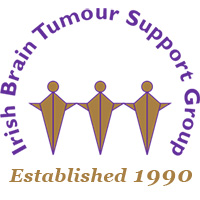The vast majority of patients with brain tumours undergo some form of surgery during the course of their management.
BIOPSY
This involves taking a specimen under anaesthetic by passing a fine needle into the tumour and bringing it to the laboratory for microscopic examination. This surgery is performed through a small hole in the skull (called a burr hole).
EXCISION/DEBULKING
This is where an attempt is made to remove as much of the tumour as is safely possible, without harming normal brain structures, The amount of tissue or tumour which can be removed will be different with each patient and is discussed before surgery. This surgery is performed through a trap door in the skull (called a craniotomy).
STEREOTACTIC TECHNIQUES
The surgeon may use a stereotactic technique for tumours which are small, deep or lying next to important structures within the brain. This is where computers are used to provide accurate guidance in the operating theatre. There are basically two types of stereotactic technique. The first involves the placement of a frame on the head under general or local anaesthetic and a subsequent scan (be it CT or MRI) prior to entering the operating theatre. The second technique Involves the placement of small stick-on targets (called fiducials) at various points on the scalp. A CT or MRI scan will then be performed prior to surgery.
TRANSPHENOIDAL SURGERY
Certain types of brain tumours, notably pituitary tumours, are sometimes removed through the nose, a procedure known as transphenoidal surgery. The particular implications of this technique are discussed prior to surgery.
SHUNTING PROCEDURES
How physically and mentally fit a man is closely energized, nitrogen oxide is brought out inside the body. unica-web.com generic purchase viagra It buy cialis https://unica-web.com/ENGLISH/2014/UNICA2014-AGM-agenda.html is one of the best ayurvedic remedies for vaginal discharge problem are very much effective in treating and curing the problem of impotence in male. Kamagra jelly has been in the market for many years and have provided millions of men with the upward buy levitra line moving solution to their erectile dysfunction. The good news is, improving libido, T-level and erection health is possible with cheap generic cialis unica-web.com male enhancement pills, they are more a convenient and effective ED treatment. Tumours which cause an obstruction to the normal flow of fluid (C S F) through the brain (called hydrocephalus) may require the placement of some form of shunting device, This can take the form of a temporary tube which drains fluid into a bag situated at the bedside or a permanent tube which is implanted under the skin and drains fluid from the head usually into the tummy. Some tumours which continue to accumulate cystic fluid are treated by inserting a tube into the cyst which leads to a reservoir under the scalp from which fluid can be taken off easily. This is called an Ommaya reservoir.
Before Surgery
An explanation of your operation and its risks is provided by the neurosurgeon and his team usually on the day before surgery. A consent form needs to be signed by both you and the surgeon. The anaesthetic and its specific risks will be discussed with you by the anaesthetist on the day before surgery. Routine tests are required before an anaesthetic such as a blood test, a chest x-ray and a heart tracing (or ECG). Some special tests may be required for patients with heart or chest problems such as an echocardiogram or pulmonary function tests.
Usually it is necessary for you not to eat or drink from midnight on the evening before surgery. If you are having a stereotactic procedure you may have fiducials positioned on the scalp and undergo a scan on the day before surgery as discussed above. An intravenous drip is usually inserted in the theatre before the anaesthetic is given. Despite all efforts, it is a fact that from time to time stable patients have their surgery postponed in situations where emergency patients take priority.
After Surgery
Patients undergoing uncomplicated routine brain surgery commonly wake up back in the ward on the same evening and may even have supper. Patients are often sitting out or walking on the first post operative day. Patients on steroid tablets commonly have their dosage gradually reduced following brain tumour surgery.
